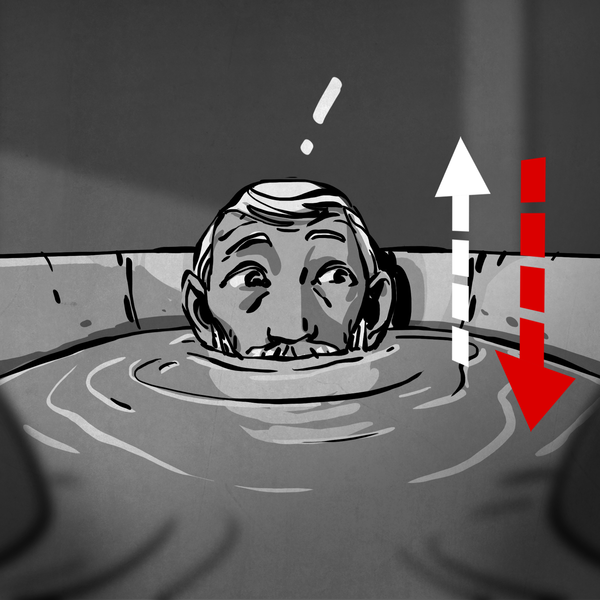Brilliant Labs have been making near-eye display platforms for some time now, and they are one of the few manufacturers making a point of focusing on an open and hacker-friendly approach to their devices. Halo is their newest smart glasses platform, currently in pre-order (299 USD) and boasting some nifty features, including a completely new approach to the display.

Halo is an evolution of the concept of a developer-friendly smart glasses platform intended to make experimentation (or modification) as accessible as possible. Compared to previous hardware, it has some additional sensors and an entirely new approach to the display element.
Whereas previous devices used a microdisplay and beam splitter embedded into a thick lens, Halo has a tiny display module that one looks up and into in the eyeglasses frame. The idea appears to be to provide the user with audio (bone-conduction speakers in the arms of the glasses) as well as a color “glanceable” display for visual data.
Some of you may remember Brilliant Labs’ Monocle, a transparent, self-contained, and wireless clip-on display designed with experimentation in mind. The next device was Frame, which put things into a “smart glasses” form factor, with added features and abilities.
Halo, being in pre-release, doesn’t have full SDK or hardware details shared yet. But given Brilliant Labs’ history of fantastic documentation for their hardware and software, we’re pretty confident Halo will get the same treatment. Want to know more but don’t wish to wait? Checking out the tutorials and documentation for the earlier devices should give you a pretty good idea of what to expect.
















Just want heads up display, no AI garbage and subscription and connected please. Even a clock and a ticker tape of my messages (actually hands free) would be amazing. ‘Smart’ watches also dumb, haven’t worked for me. Only one I’ve been able to use is my Pebble, and that’s only because I don’t need to tetuer kt to my phone at all, it actually works standalone.
The platform seems fairly affordable, too bad they are light on details about the display, and heavy on AI subscription.
Came here to say the same. I don’t want the AI stuff, just a HUD on some prescription glasses.
If it’s like their previous products it will be programmable and you can completely ignore the AI stuff. However it definitely is shaping up to be like their previous products in that they intend to make a single production run and then abandon it for the next thing (direct from of a founder)
When you look at smart glasses and the only thing you can glean from the specs is a vague mention of a 40g weight, it’s pretty hard to get excited.
Isn’t this idea shown off during CES by some Chinese company (don’t remember their name)?
Halliday glasses…theirs was a green monochrome display similar placement.
Yes, they did copy it.
“Halo has a tiny display module that one looks up and into in the eyeglasses frame.”
Please tell us more about that as that seems to be the most interesting part if you’d ask me. I do not doubt that a display can be connected to a computer with tiny speakers. Please tell us more about the display!
Seeing my messages or who is calling is nice. I hope a pair of glasses will soon show me if the item I’m looking at while shopping is fairly priced or comes in a different configuration or color. Can show me a “how to” video while I’m repairing or creating something and give me a map overlay to take me to my car in a parking lot or from a trail.
Sure, you prefer your feature with data siphoning and AI without ads? that´s will be xxUSD per month
Or you prefer it with data siphoning an AI with ads ? that´s for free, courtesy of (name on IT giant here)
That’s exactly what I’m waiting for as well
dang, just a “glancable” display. I think many of us (at least me …) are looking for see-through HUDs. Unfortunately the see-through optics all have huge tradeoffs. The simple methods like 45-degree reflector and bug-eye reflectors takes up a lot of space. Holographic waveguides are small but diffract light like a prism so colors blur.
I would totally take a monochrome waveguide display if the rest of the specs (FOV, resolution) were good. It would work fine for navigation and alerts.
Seems from the exploded view it’s also only one eye, likely to avoid having to align things I would expect.
and their ‘frame’ version had a 640×400 resolution, so I wonder what this does, probably around the same I expect. So not quite the stuff from SciFi shows.
If you are well into AI this might be for you, but if not..
The display is the really interesting part of this, then I saw the “AI processor” and lost all interest.
Looks like they ripped off Halliday.
These are a ripoff of the Halliday smart glasses with its digiwindow.